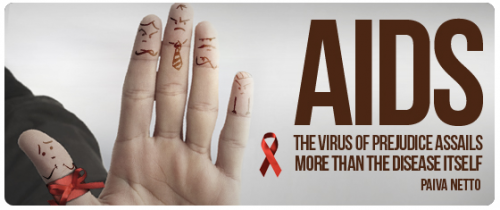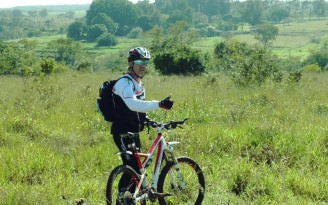
Living with AIDS is “a challenge overcome every day,” says sufferer
Karine Salles
Monday | December 01, 2014 | 9:10 AM | Last update: October 04, 2016, 10:29 AM (Brasilia time)

Despite the tendency to become stabilized, the HIV/AIDS epidemic affects different regions in the world in different ways. According to the 2011 Global Report, from the Joint United Nations Programme on HIV/AIDS (UNAIDS), there are 34 million people with the virus. The organization has recognized that new infections and AIDS-related deaths have fallen to their lowest levels since the peak of the epidemic in the 1990s.
READ MORE ABOUT IT:
- Journalist Paiva Netto writes “AIDS: The virus of prejudice assails more than the disease itself”
- LBV’s Permanent Campaign in favor of Life and against prejudice

In the 1980s, after being diagnosed as being a carrier of the virus, patients had to face up to the prospect of a short “life span” of approximately five months. Currently, thanks to advances in research in the area, survival prospects are approximately one hundred months, according to Dr. Pedro Chequer, UNAIDS Coordinator in Brazil.
A carrier of the virus for the last 19 years, teacher Nair Brito summed up what it is like living with the disease and maintaining a healthy life. “We had no chance; the diagnosis meant: ‘Look, you’re going to die in a little while’. In 1996, with the anti-retroviral drugs and researches, this changed and reduced,” she pointed out in an interview with the Good Will Portal.
With regard to the progress made in treatment, Dr. Chequer emphasized that “for this to happen it’s necessary for people to be diagnosed. The great problem the world faces today is diagnosis: half the people do not know they have the virus and because of this they are not clinically monitored and are not under treatment.”
A new routine is incorporated into the lives of HIV-positive people when they start treatment. There are those who say that the initial treatment is one of the most difficult moments. “The drugs are no sweet candy; no way. They cause severe effects in the organism and body. It is still a challenge living with AIDS,” points out Nair.
A carrier of the virus for the last 19 years, teacher Nair Brito summed up what it is like living with the disease and maintaining a healthy life. “We had no chance; the diagnosis meant: ‘Look, you’re going to die in a little while’. In 1996, with the anti-retroviral drugs and researches, this changed and reduced,” she pointed out in an interview with the Good Will Portal.
With regard to the progress made in treatment, Dr. Chequer emphasized that “for this to happen it’s necessary for people to be diagnosed. The great problem the world faces today is diagnosis: half the people do not know they have the virus and because of this they are not clinically monitored and are not under treatment.”
A new routine is incorporated into the lives of HIV-positive people when they start treatment. There are those who say that the initial treatment is one of the most difficult moments. “The drugs are no sweet candy; no way. They cause severe effects in the organism and body. It is still a challenge living with AIDS,” points out Nair.


